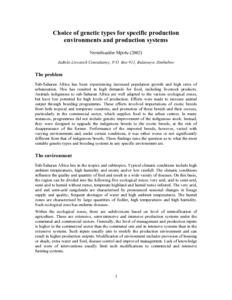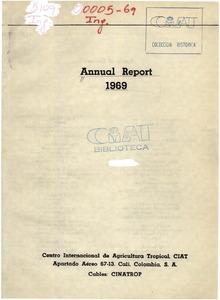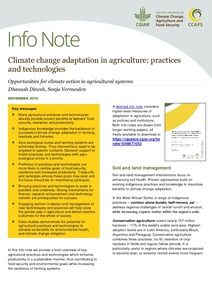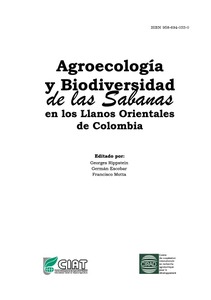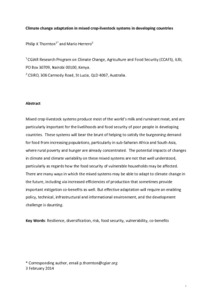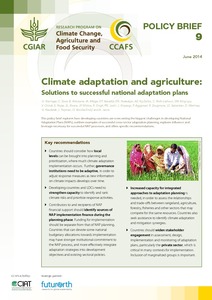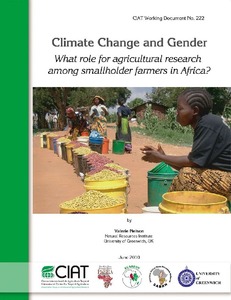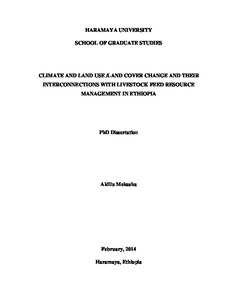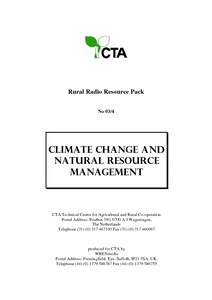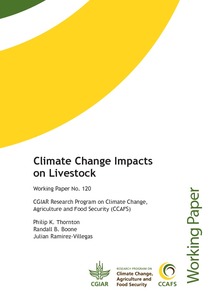rangelands
AGROVOC URI: http://aims.fao.org/aos/agrovoc/c_6448
Climate change adaptation in agriculture: practices and technologies. Opportunities for climate action in agricultural systems
In this info note we provide a brief overview of key
agricultural practices and technologies which enhance
productivity in a sustainable manner, thus contributing to
food security and environmental goals while increasing
the resilience of farming systems.
A twinned info note considers
higher-level measures of
adaptation in agriculture, such
as policies and institutions. Updated: November 2016.
Both info notes are drawn from
longer working papers, all
freely available to download at
Claves sinópticas ilustradas para identificar especies de gramíneas comunes en la altillanura de los Llanos Orientales de Colombia
Climate change, agriculture, food security, East Africa
In East Africa, agricultural systems are highly vulnerable to climate change and variability because of high dependence on rainfall. The increasing frequency and severity of drought, heat and cold stress as well as floods are likely to lead to major food crises in the region. Rapid population growth rates, poverty and inequality exacerbate problems caused by exposure to climatic change. The region, therefore, requires long-term actions to build the capacity of its people and institutions to better adapt to climate change and climate variability, and reduce greenhouse gas emissions.
Climate change adaptation in mixed crop?livestock systems in developing countries
Mixed crop?livestock systems produce most of the world’s milk and ruminant meat, and are
particularly important for the livelihoods and food security of poor people in developing
countries. These systems will bear the brunt of helping to satisfy the burgeoning demand
for food from increasing populations, particularly in sub?Saharan Africa and South Asia,
where rural poverty and hunger are already concentrated. The potential impacts of changes
in climate and climate variability on these mixed systems are not that well understood,
Climate adaptation and agriculture: Solutions to successful national adaptation plans
The purpose of this brief is to share insights on agriculture and NAPs with national-level decision makers in developing countries and Least Developed Countries (LDCs), multilateral agencies, UNFCCC negotiators and donors. This brief explores how countries are overcoming the biggest challenges in developing NAPs, outlines examples of successful cross-sector adaptation planning, explores influence and leverage necessary for successful NAP processes, and offers specific recommendations.
Climate change and gender: what role for agricultural research among smallholder farmers in Africa?
This study was commissioned to provide an understanding of the complex impacts climate change will likely have on existing gender and social inequalities.
Climate and land use land cover change and their interconnections with livestock feed resource management in Ethiopia
We assessed land use/ land cover changes from remotely sensed satellite imagery and compared this with households perceptions on availability/use of livestock feed resources and feed deficit management strategies since the 1973 in three districts representing the pastoral, agro-pastoral and mixed crop-livestock eco-environments of Ethiopia.
Climate change impacts on animal health and vector borne diseases
Climate Change Impacts on Livestock
This Working Paper summarizes projected climate change impacts on livestock across
Africa, using a combination of literature review and some new results on the projected
impacts of climate change on the rangelands of Africa. Findings show that there are
many options that can help livestock keepers adapt, but there appear to be no options
that are widely applicable which do not have constraints to their adoption. An
enabling technical and policy environment will thus be needed to ensure livestock

